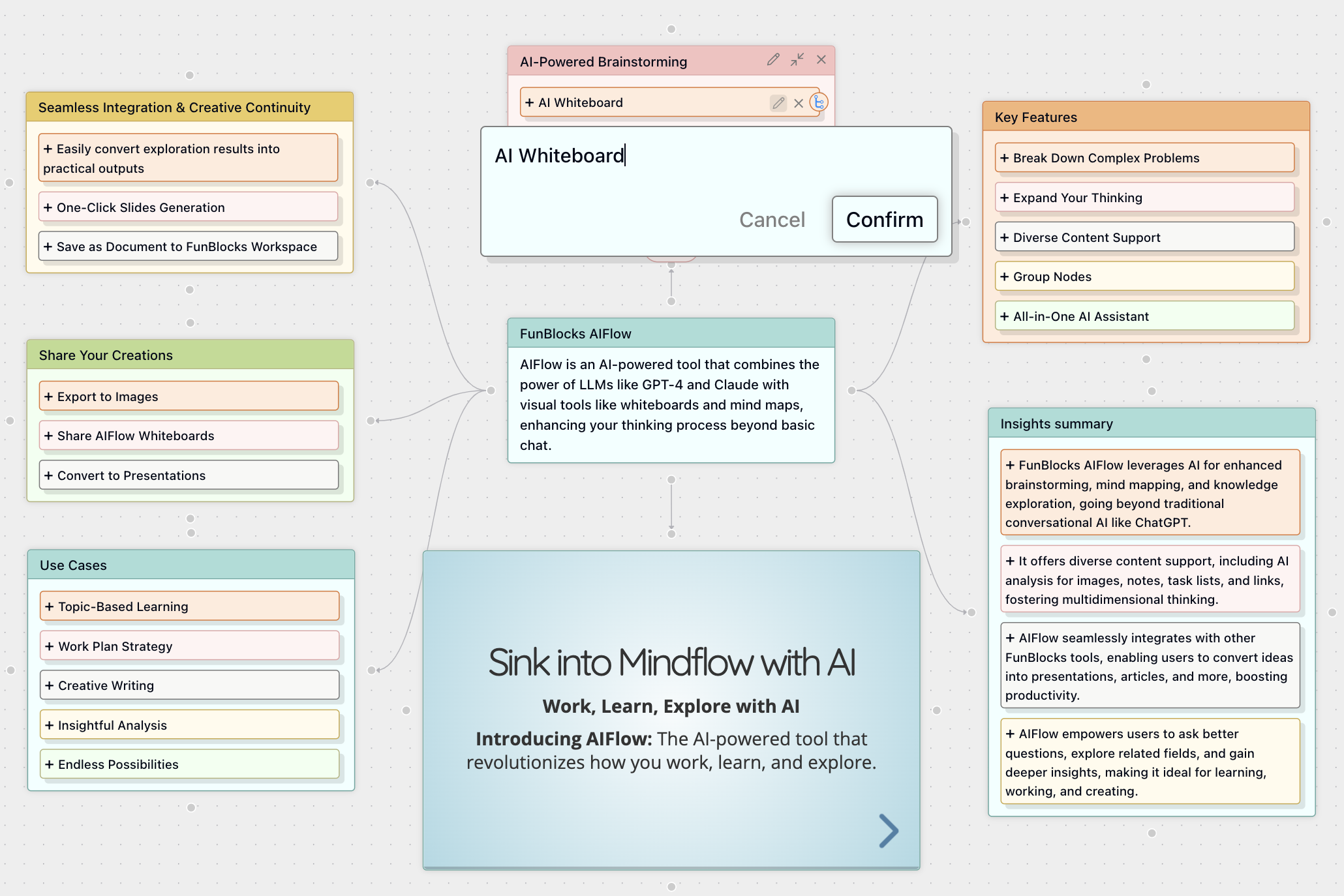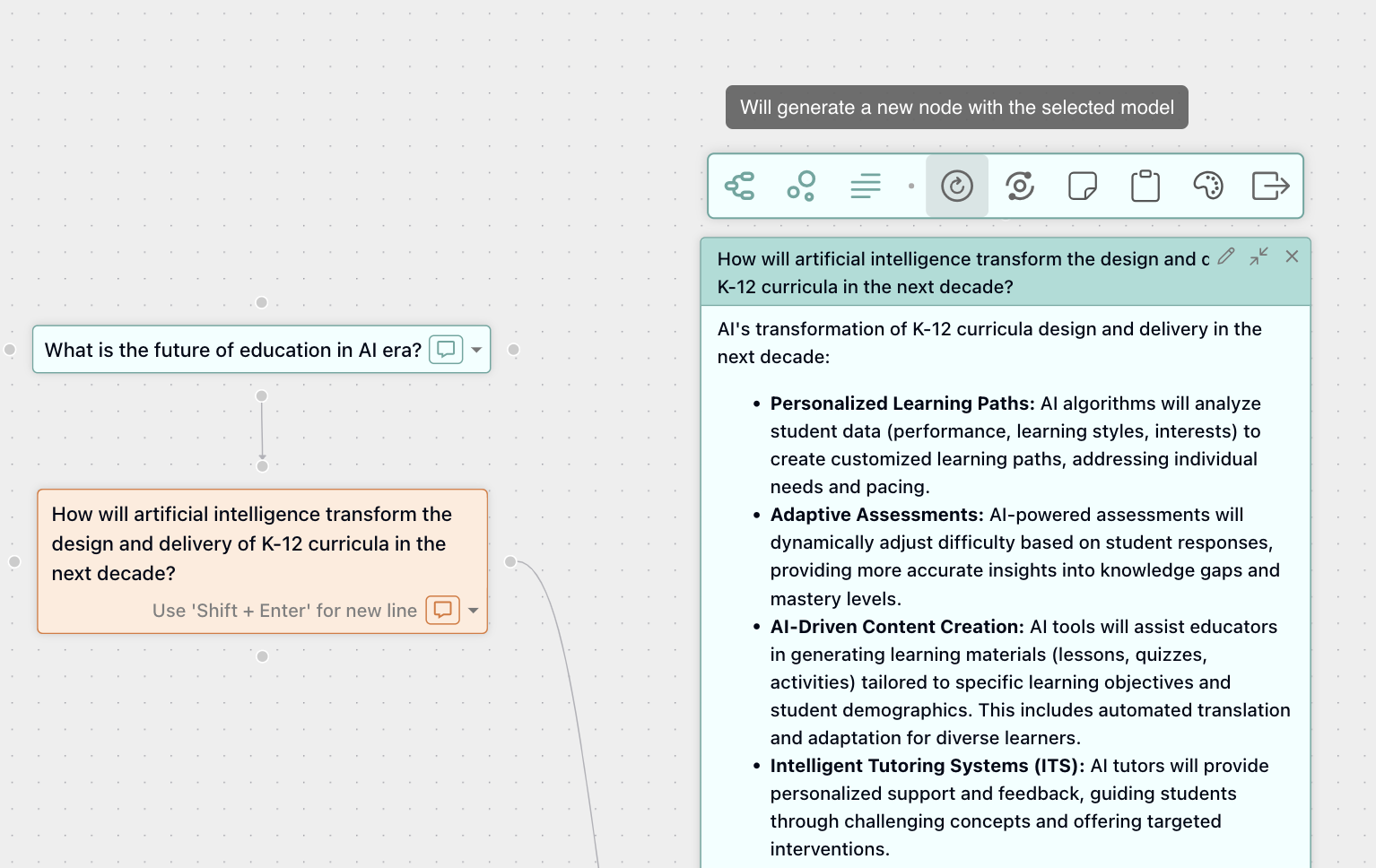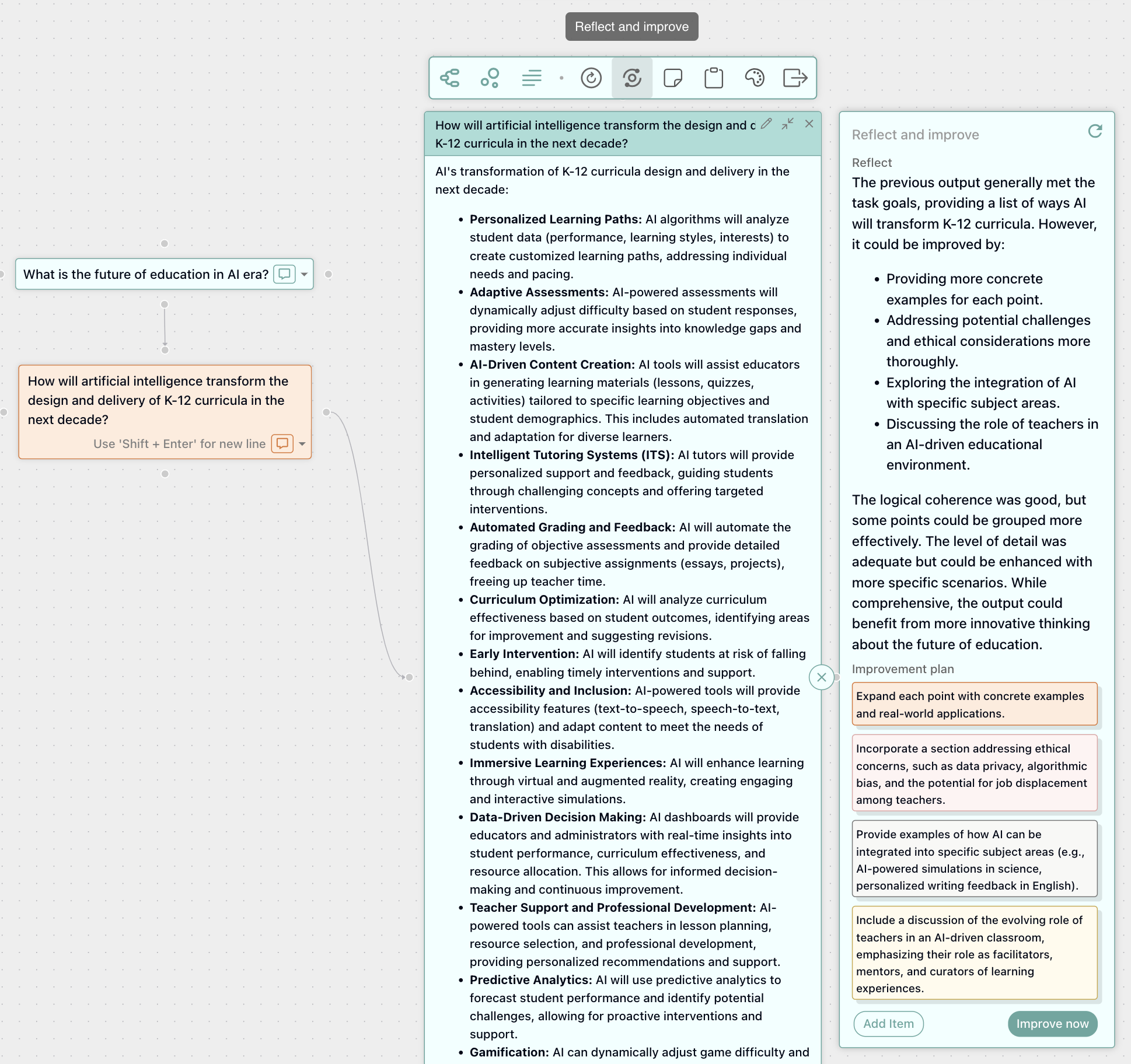Optimizing AI Output
Innovative Approaches for AI Self-Reflection and Enhancement
Not satisfied with your AI-generated results? FunBlocks AIFlow offers several powerful methods to refine and enhance the content you receive. In this installment of our series, we'll explore how to optimize AI outputs through reflection techniques, a key advantage built directly into the AIFlow platform.
Three Ways to Improve AI-Generated Content
When working with AI-generated content in AIFlow, you have three main options to enhance the results:
1. Direct Editing
You can manually edit any generated subtopic. For example, in mind maps created during brainstorming sessions, you can easily add, delete, or modify subtopics to better align with your needs.

2. Model Switching
In AIFlow, you can choose different large language models (LLMs) to regenerate any generated node, creating a new sibling node. This gives you the flexibility to try various AI approaches to find the output that best serves your purpose.

3. AI Self-Reflection
Perhaps the most powerful optimization technique is enabling AI self-reflection. With this feature, you can:
- Have the AI analyze its own output
- Generate specific improvement suggestions
- Review these suggested optimizations
- Add your own adjustments and opinions
- Instruct the AI to regenerate content based on this refined optimization plan

The Power of AI Self-Reflection
Having an AI reflect on its own output before regenerating content is a highly effective strategy for improving quality. This approach represents a universal best practice when collaborating with AI systems.
What makes AIFlow special is how this advanced strategy is built directly into the product interface. Instead of writing complex prompts yourself, AIFlow lets you trigger the reflection-optimization cycle with a single click.
Why This Matters
The reflection process creates a feedback loop that helps the AI understand your specific needs better. By reviewing the AI's self-assessment and adding your own input, you create a collaborative environment where each iteration produces increasingly refined results.
This approach saves time, reduces frustration, and ultimately delivers higher-quality outputs tailored to your exact requirements.
Getting Started With Reflection
To use the reflection feature in AIFlow:
- Generate initial content
- If unsatisfied, click the reflection option
- Review the AI's self-analysis
- Add your own feedback if needed
- Approve the optimization plan
- Receive improved content based on this reflection
Try implementing this reflection strategy in your next AIFlow project to experience how it can transform ordinary AI outputs into exceptional content.